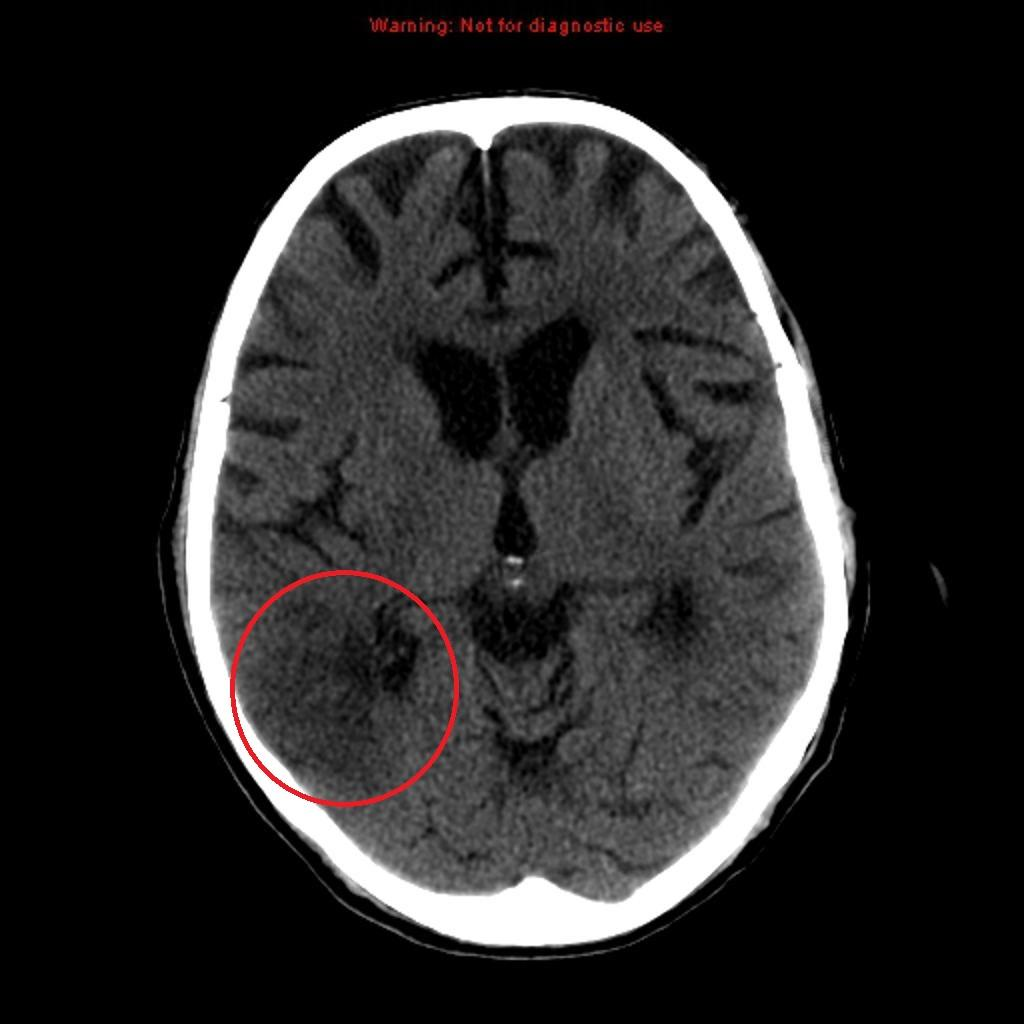Assessment Flashcard 8
Rationale
D. Rationale: The endotracheal tube is an advanced airway with a capnogram sensor attached to it. It is essential to measure end-tidal CO2 pressure directly from the endotracheal tube “to monitor CPR quality, optimize chest compressions, detect return of spontaneous circulation during chest compressions, or when a rhythm check reveals an organized rhythm.” The cardiac monitor displays the results from the capnogram.
Question
The sensor for quantitative waveform capnography attaches to which one of the following medical devices?
a. ECG leads
b. Central line
c. Defibrillator
d. Endotracheal tube
Answer
d. Endotracheal tube
Rationale
A. Rationale: If the patient is conscious, the ACLS survey is used for the initial assessment of the patient. If the patient appears unconscious, the BLS survey is used for the initial assessment. After completing the appropriate steps in the BLS survey, the ACLS survey is then utilized for more advanced assessment and treatment.
Question
Using the systematic approach, if a patient appears conscious, the rescuer should use which survey for the INITIAL assessment?
A. The ACLS survey
B. The BLS survey
C. Both the BLS and ACLS surveys simultaneously
D. Neither of these
Answer
A. The ACLS survey
Rationale
C. Rationale: Resuscitative efforts can be monitored by the following physiologic variables: end-tidal carbon dioxide, coronary perfusion pressure, arterial relaxation pressure, and central venous oxygen saturation.
Question
Waveform capnography measures which physiologic variable when treating a patient with cardiac arrest in pulseless ventricular tachycardia?

a. Coronary perfusion pressure
b. Oxygen saturation
c. End-tidal carbon dioxide
d. Arterial relaxation pressure
Answer
c. End-tidal carbon dioxide
Rationale
B. Rationale: It is important to immediately perform rewarming techniques in cardiac arrest patients with hypothermia so that CPR and defibrillation will be effective in these patients. The goal is to increase the core temperature to more than 30°C.
Question
What is a significant problem when providing ACLS to patients with cardiac arrest secondary to hypothermia?
a. Chances of survival with good neurologic outcome is lowest in cardiac arrest patients with hypothermia.
b. CPR and defibrillation are ineffective if the patient’s core temperature is 30°C or less.
c. Most hypothermic patients are beyond help once located.
d. There is a great risk of hypothermia for healthcare providers.
Answer
b. CPR and defibrillation are ineffective if the patient’s core temperature is 30°C or less.
Rationale
A. Rationale: Cardiac tamponade is one of the reversible causes of cardiac arrest. Due to the restrictive pressure of the increased intrapericardial fluid, the heart literally stops its motion, leading to cardiac arrest.
Question
What is the clinical condition where blood or fluid accumulates between the pericardium and heart wall secondary to trauma or infection and causes the pericardium to stretch to its elastic limit, which will restrict cardiac motion, leading to cardiac arrest?
a. Cardiac tamponade
b. Congestive heart failure
c. Cardiomegaly
d. Rheumatic heart disease
Answer
a. Cardiac tamponade
Rationale
B. Rationale: Tension pneumothorax is a reversible cause of cardiac arrest. The damage to the lung can be due to various causes, such as trauma or mechanical ventilation. Patients exhibit respiratory distress, ipsilateral hyperexpansion of the chest, decreased breath sounds, and hyper-resonance to percussion on the ipsilateral side of the pneumothorax.
Question
What is the clinical condition wherein air leakage from a damaged lung within the thoracic cavity compresses cardiac vessels and leads to cardiac arrest?
a. Acute respiratory distress syndrome
b. Tension pneumothorax
c. Pulmonary embolism
d. Atelectasis
Answer
b. Tension pneumothorax
Rationale
C. Rationale: Verifying scene safety is the first step in the BLS algorithm.
Question
What is the first thing to check upon seeing an unresponsive person on the ground?
a. For a pulse
b. For airway obstruction
c. If the area is safe for you to approach the patient
d. For any signs of trauma
Answer
c. If the area is safe for you to approach the patient
Rationale
C. Rationale: The BLS assessment is applied to unconscious patients with suspected cardiac arrest. The BLS assessment is primarily focused on early CPR and defibrillation. The goal of responders during the BLS assessment is to diagnose cardiac arrest.
Question
What is the goal of responders during the BLS assessment?
a. To determine if the patient needs intubation
b. To determine if the patient will need to be brought to the hospital
c. To diagnose cardiac arrest
d. To decide whether or not to contact EMS
Answer
c. To diagnose cardiac arrest
Rationale
D. Rationale: Waveform capnography measures the amount of carbon dioxide expelled from the lungs at the end of the expiration phase of the respiratory cycle.
Question
What physiologic parameter does waveform capnography measure?
a. Arterial oxygen saturation
b. Vital capacity
c. Venous oxygen saturation
d. End-tidal CO2 pressure
Answer
d. End-tidal CO2 pressure
Rationale
B. Rationale: A total EWS of 10 or more is an immediate life-threatening critical illness, and calling for the medical emergency team is mandatory.
Question
What total Early Warning Score will trigger a call for the hospital’s medical emergency team?
a. < 3
b. > 10
c. > 7
d. < 5
Answer
b. > 10